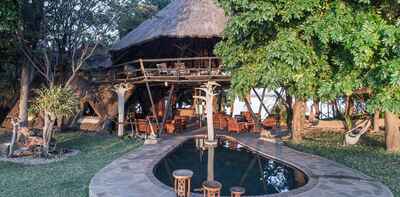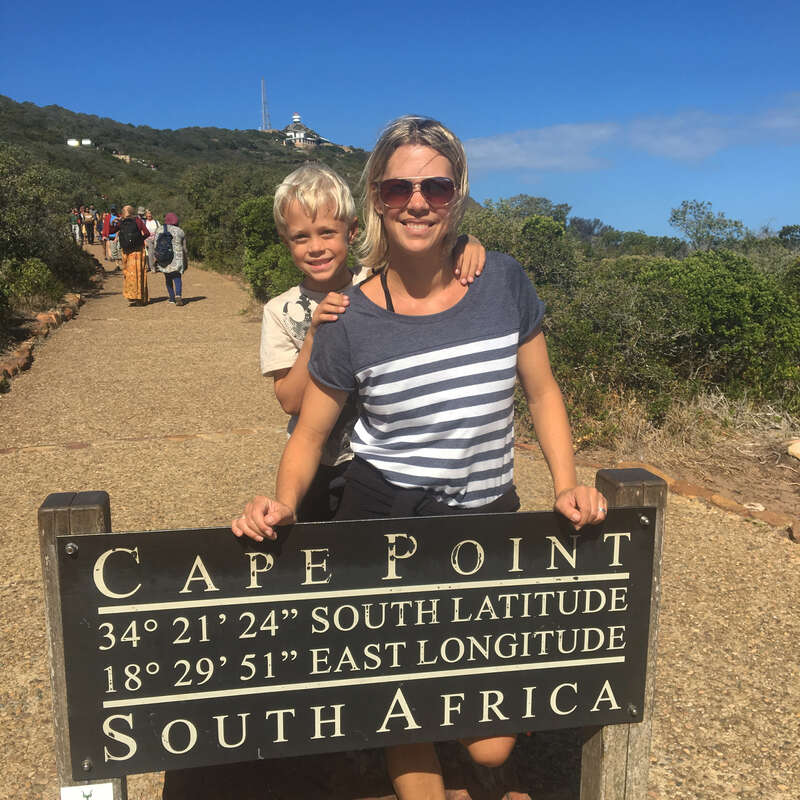About Musango Safari Camp
On an island on Lake Kariba, close to Zimbabwe’s Matusadona National Park, Musango Safari Camp was set up ...
... in 1990 by the park’s former head warden, Steve Edwards. Steve is a Zimbabwean guide of considerable note who, with his wife Wendy, still owns and manages the camp; they are often found in residence here. Steve's breadth of knowledge goes far beyond the wildlife of the area, encompassing the local landscapes, ornithology and paleontology, and this is reflected in the wide variety of activities available at Musango.
One of the oldest properties in the Matusadona area and one of the simpler options, Musango is clean, and functional in design. However, the lodge itself isn’t the primary attraction. Come rather for the lake, excellent birdwatching, personal, attentive but unfussy service and high-quality guiding. Steve and his small team have a deep knowledge of not just the flora and fauna, but also the wider cultural and conservation aspects of the area. With its island location, Musango also makes a fantastic place to relax, usually at the beginning or end of a safari.
Our view
One of the oldest properties in the Matusadona area and one of the simpler options, Musango is clean, and functional in design. However, the lodge itself isn’t the primary attraction. Come rather for the lake, excellent birdwatching, personal, attentive but unfussy service and high-quality guiding. Steve and his small team have a deep knowledge of not just the flora and fauna, but also the wider cultural and conservation aspects of the area. With its island location, Musango also makes a fantastic place to relax, usually at the beginning or end of a safari.
Accommodation
8 tented chalets
Children
Best for aged 10+
Open
All year
Activities

4WD Safari

Birdwatching

Boat trip

Fishing

Guided walking safari

Private activities
Traveller reviews of Musango Safari Camp
9 real, un-edited reviews from Expert Africa's travellers.
Arrived 26 Jul 2021, 3 nights
"Musango Safari Camp review"
Overall rating: Good
Arrived 26 Jul 2021, 3 nights
"Musango Safari Camp Review"
Overall rating: Excellent
Arrived 3 Nov 2015, 4 nights
"A real home from home experience."
Overall rating: Excellent
Arrived 23 Nov 2014, 4 nights
"Fantastic time at Musango Safari Camp"
Overall rating: Excellent
Arrived 16 Jul 2014, 3 nights
"Musango Safari Camp review"
Overall rating: Good
Arrived 3 Sep 2012, 4 nights
"Musango Camp"
Overall rating: Average
Arrived 11 Apr 2012, 2 nights
"Excellent time at Musango"
Overall rating: Excellent
Arrived 9 Sep 2011, 3 nights
"Musango Safari Camp review"
Overall rating: Excellent
Arrived 11 Sep 2011, 3 nights
"Together with a legend"
Overall rating: Excellent
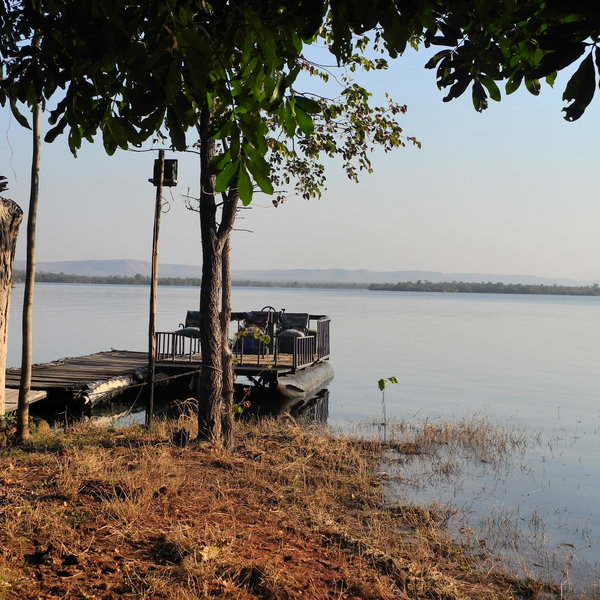
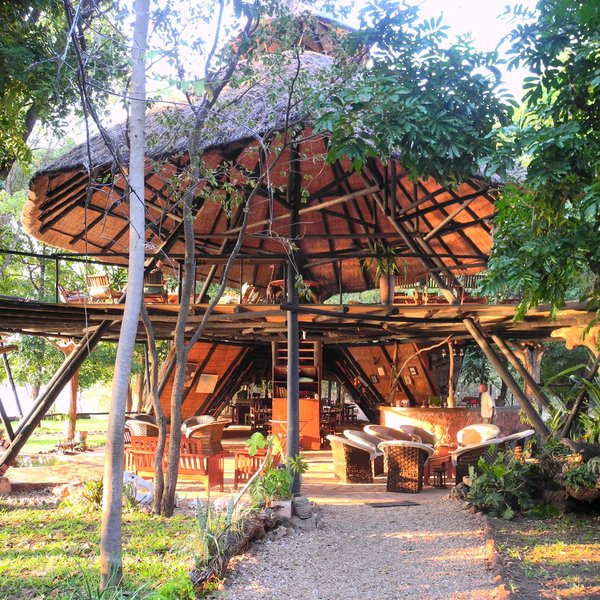
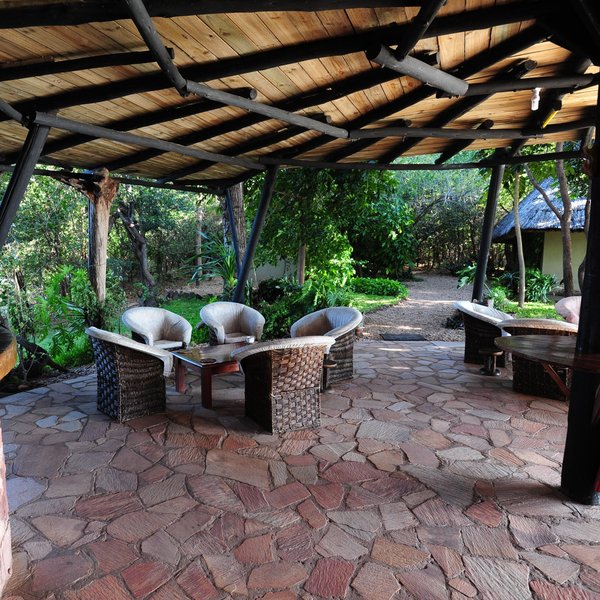
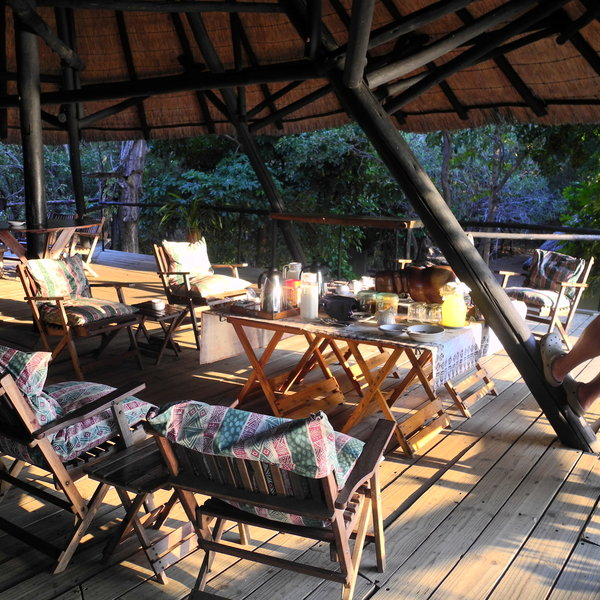
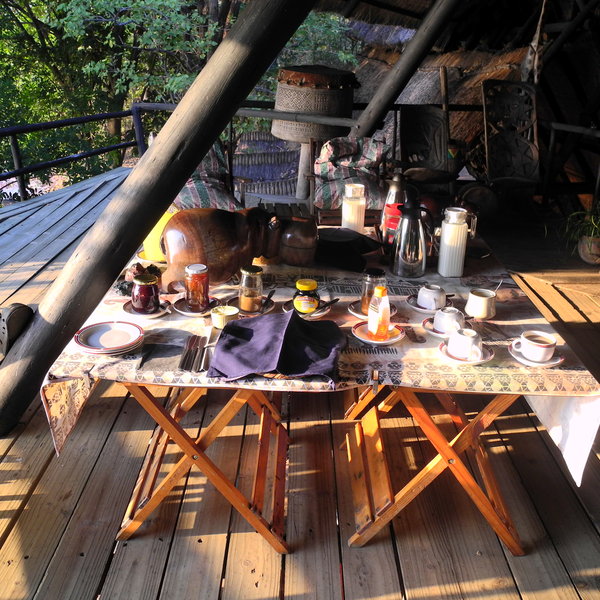
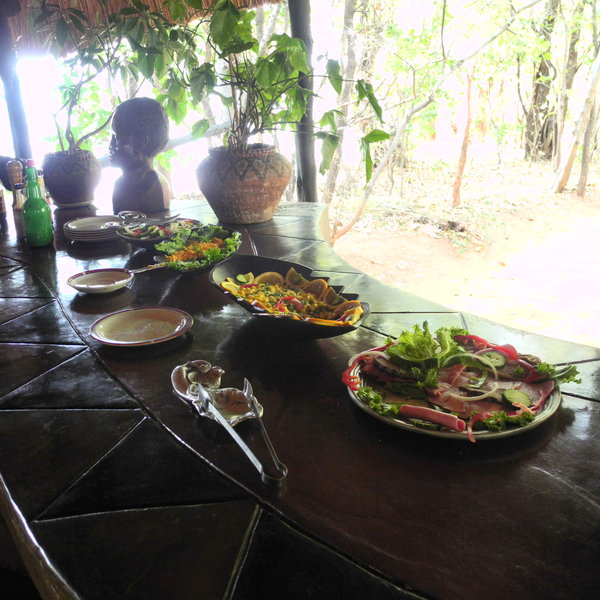
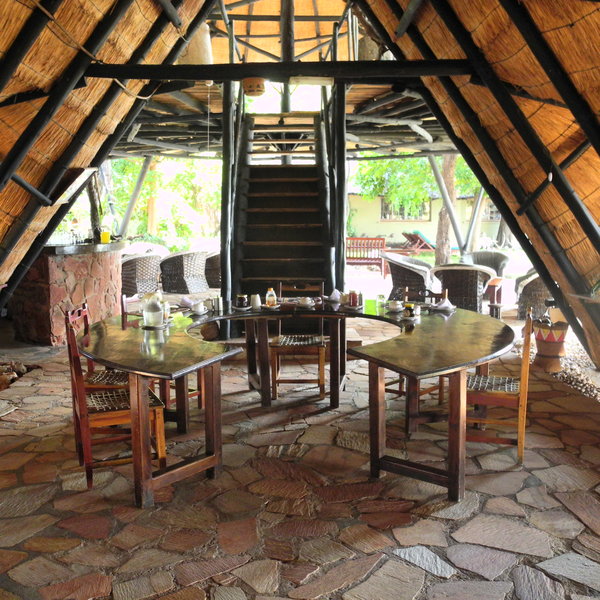
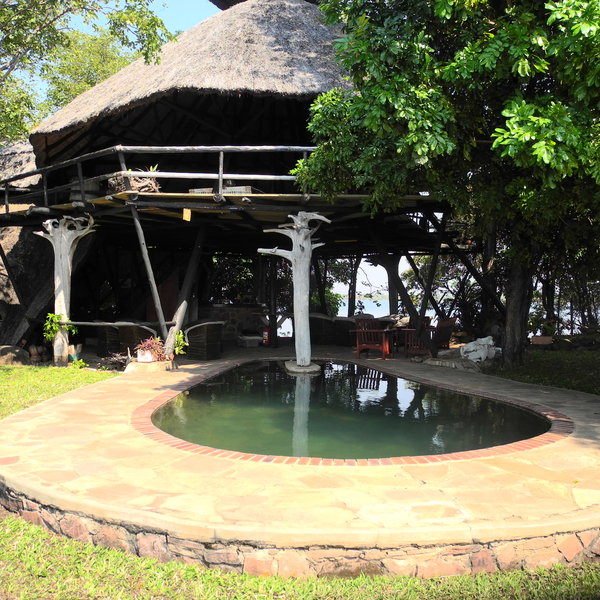
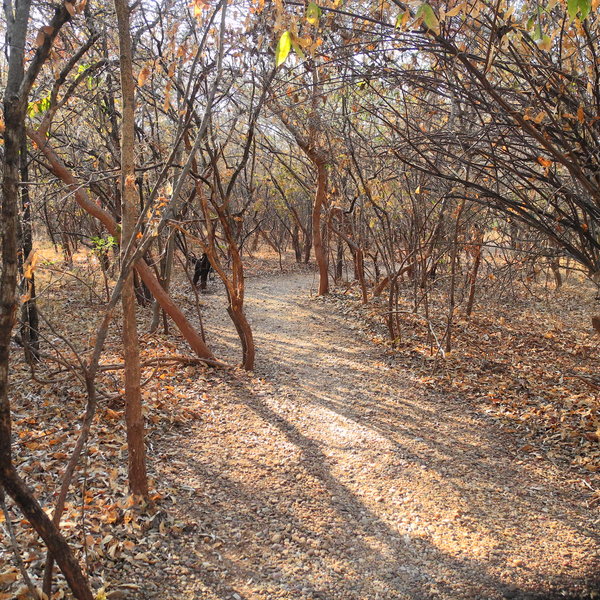
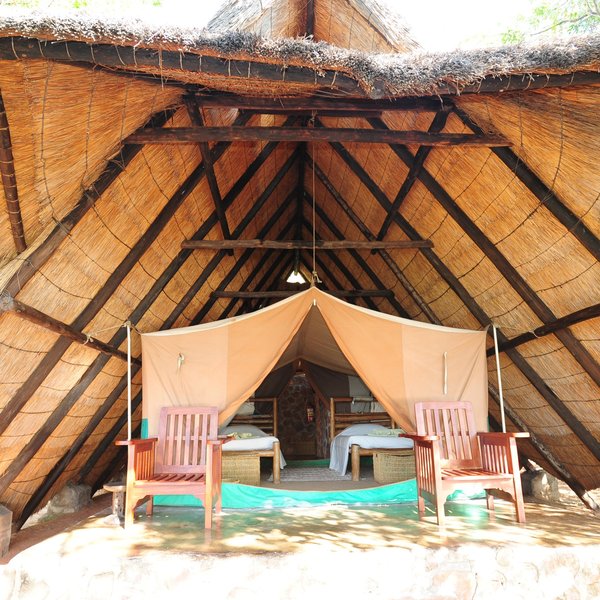
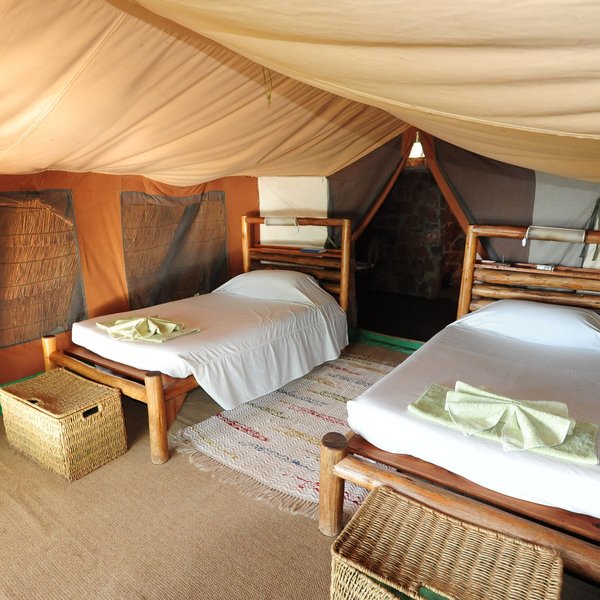
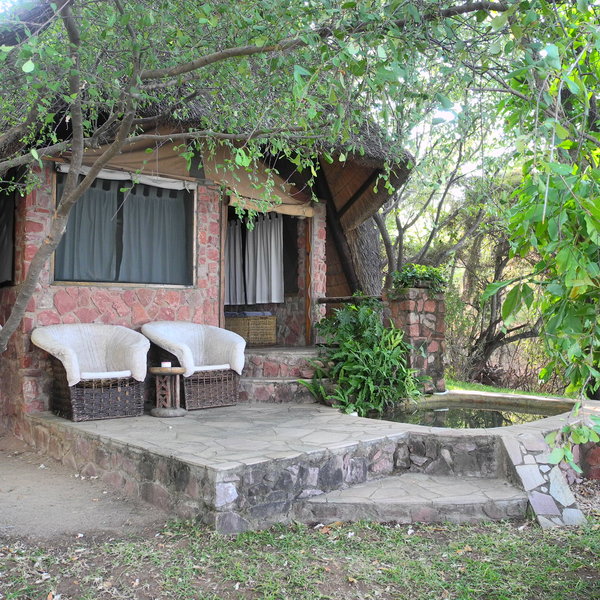
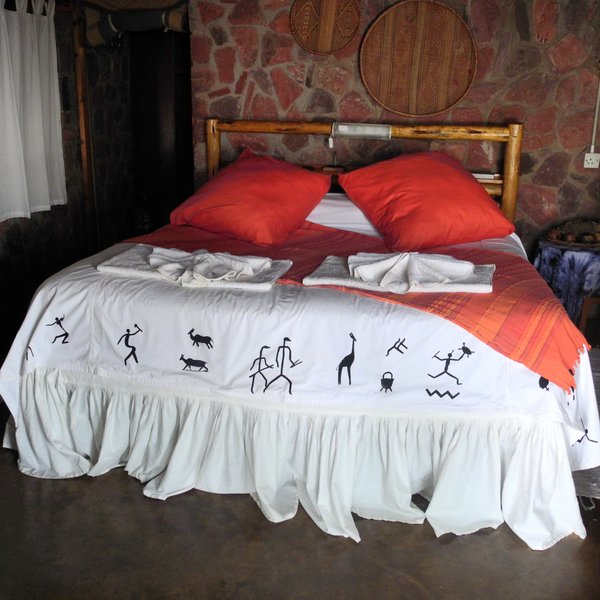
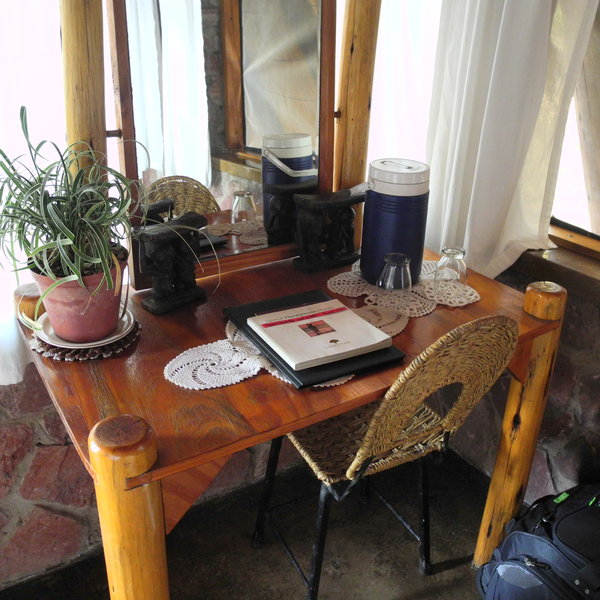
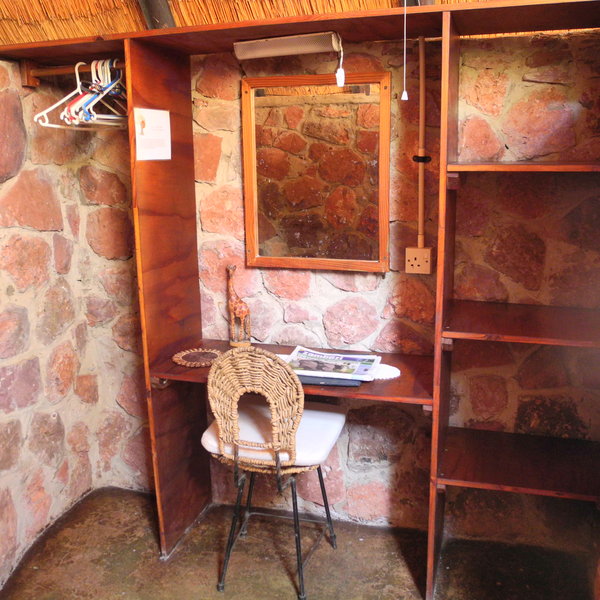
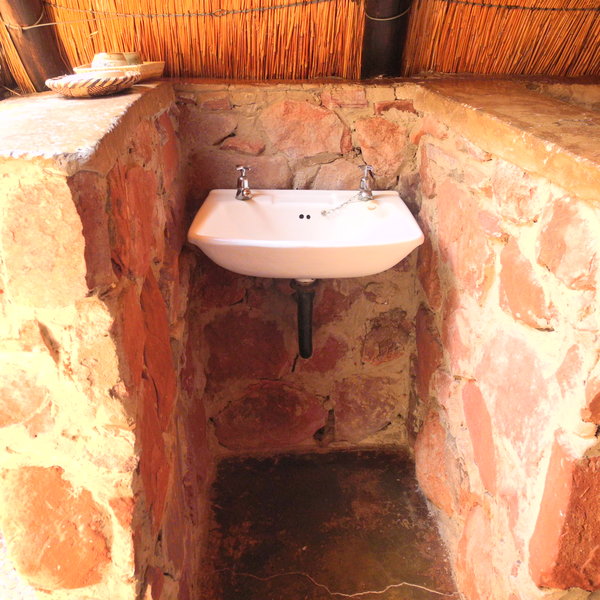
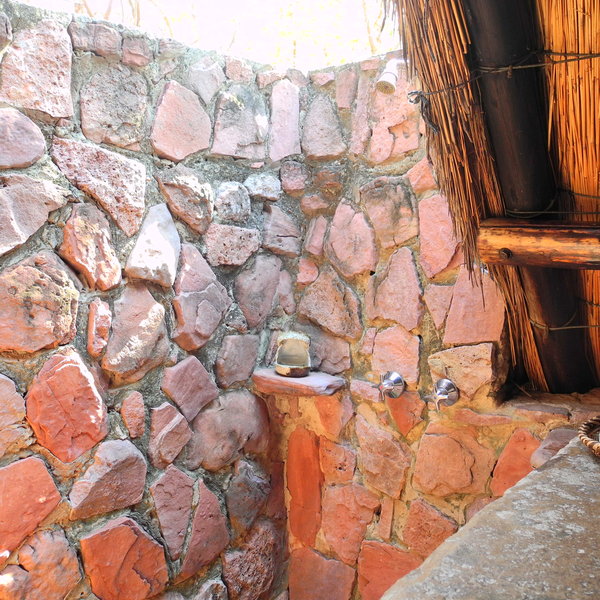
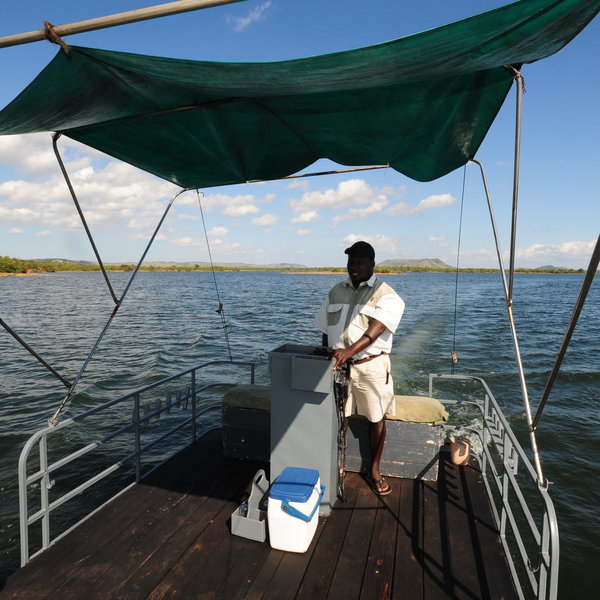
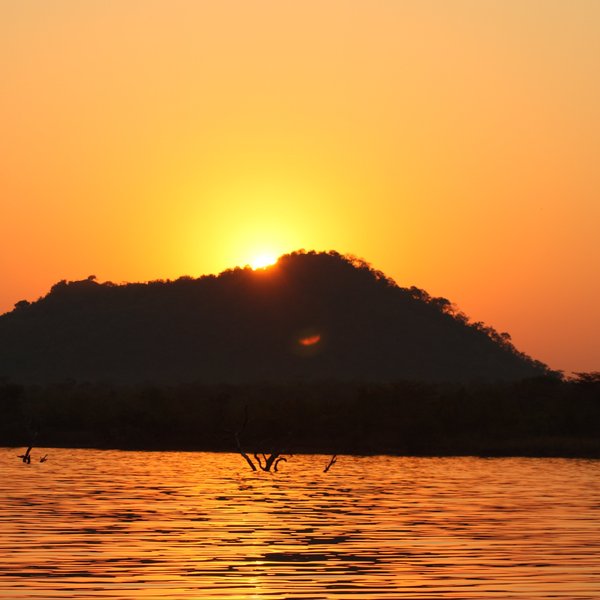
Expert Africa's gallery
When we travel we take lots of photos ourselves to give you a real and un-edited view of the safaris. See our 19 pictures and 1 videos of Musango Safari Camp to get the candid view.
View galleryMusango Safari Camp: Our full report
On an island on Lake Kariba, close to Zimbabwe’s Matusadona National Park, Musango Safari Camp was set up ...
... in 1990 by the park’s former head warden, Steve Edwards. Steve is a Zimbabwean guide of considerable note who, with his wife Wendy, still owns and manages the camp; they are often found in residence here. Steve's breadth of knowledge goes far beyond the wildlife of the area, encompassing the local landscapes, ornithology and paleontology, and this is reflected in the wide variety of activities available at Musango.
Just a short boat ride from the mainland brings you to Musango’s island, a 1 km stretch of land created when Lake Kariba filled up between 1958 and 1963. Depending on water levels the island is occasionally connected to the shore by a small land bridge.
Built under a shady canopy of trees Musango Camp has eight tented chalets, each set on a raised, polished concrete plinth in dense bush. At the front, partially shaded by a thatched roof, is a veranda overlooking a small private lawn and garden, with a couple of large wooden chairs facing east towards the lake – and the sunrise.
Inside the tents, comfortable twin beds with reading lights above them share the lake view. There's a basket for laundry, a box with extra blankets, a couple of chairs and a table with a flask of water. The back of each tent leads into a semi-open stone-walled en-suite bathroom which incorporates under the thatch a hot shower, a ceramic washbasin and a flushing toilet in its own cubicle, as well as a luggage rack.
On our most recent visit in October 2018 we were lucky enough to stay in one of Musango's two honeymoon suites. Similar to the standard chalets, each of these boasts a larger bathroom, a double bed and an inviting private plunge pool as part of a more spacious veranda. The plan is for each of the chalets to have its own pool, but the roll out is going slowly.
From the chalets, gravel paths lead through the bush to Musango's main area, a unique wood-and-thatch double-storey building. On the ground floor is a lounge and reception area, with a well-stocked bookcase, and a crescent-shaped dining table, where evening meals are usually served en famille – often joined by Steve and Wendy. The walls are decorated with local arts and crafts, as well as maps and photos of the area.
The upper deck, where breakfast and brunch are often taken, is large, airy and spacious with a few comfortable deckchairs positioned to take advantage of the views across the lake.
In front of the main area, and partially incorporated into it, is a swimming pool, while lush planting and well-maintained lawns create a cool and restful oasis in the African heat – and a lovely location for alfresco meals when the weather is good. The whole camp is surrounded by an electric fence, an unusual feature in Zimbabwe but it means that guests can walk around unescorted at night.
Land-based activities from Musango include walking safaris in Matusadona National Park and game drives, both led by experienced professional guides.
Sadly, Matusadona Park has suffered from a lack of investment over the last couple of decades and wildlife numbers have dwindled so it is no longer the wildlife destination it once was. All the same, the park is home to a fantastic variety of birdlife and there are still pleanty of elephant, buffalo and plains game, which in turn attract lion, so with a little patience there is still much to see.
On the water, guests can go fishing for tigerfish, which are found in abundance in Lake Kariba, along with vundu and bream. (In the past, the world record for the largest tigerfish caught on a fly rod was broken near Musango Safari Camp.) Game viewing and fishing from a motorised pontoon offer a steady option for photographers and the boat's flat bottom means there's plenty of space to move around for different angles, as well as to store camera and/or fishing equipment. Steve is himself a birding enthusiast and we saw upwards of 60 species with him during our morning cruise. Watching a hunting fish eagle was a highlight although we missed the Pel’s fishing owl that Steve informs us is usually around.
There is usually an option to visit a typical fishing village from Musango, which provides a different, more human aspect to a trip. On a previous visit we particularly liked the emphasis placed on the important role that local people play in wildlife conservation, and felt that these trips were handled very sensitively. There’s clearly a good relationship between the lodge and the villagers, perhaps fostered by the fact that Steve and Wendy’s was one of the few camps that remained open throughout Zimbabwe’s troubles, providing valuable support and income for the local community.
To add to the mix, Steve is a keen paleontologist and has discovered a dinosaur fossil site in the park. He has a small fossil collection at the camp that he is keen to show to guests
Activities
4WD Safari
Birdwatching
Boat trip
Fishing
Guided walking safari
Private activities
Families & children
- Attitude towards children
- Children of all ages are welcome at Musango.
- Property’s age restrictions
- None
- Special activities & services
- Children can make plaster-cast animal footprints, and there are guided nature walks within the confines of the camp.
- Equipment
- There are no cots at Musango, but Steve has devised a special chair for babies, which clips onto the table.
Children under five are encouraged to eat earlier. Babysitting is provided by a member of staff but please note that they are not formally trained in child care. - Generally recommended for children
- With some caution, we can recommend Musango Camp for older and more mature children over ten – largely because Steve and Wendy have their own children, who spent time in camp growing up, and so are very understanding of the needs and interests of children on safari.
- Notes
- The whole camp is surrounded by an electric fence which helps to keep out larger dangerous game. Nevertheless, children should remain under parental supervision at all times.
Food & drink
- Usual board basis
- Full Board & Activities
- Food quality
- When we stayed at Musango in October 2018, the food was tasty and wholesome. With prior notice the kitchen is able to cater for most dietary requirements.
Breakfast is usually a fairly light buffet of yoghurts, cereals, cold meats, cheeses, fresh fruit and freshly baked bread.
Guests return from the morning activity in time for brunch. On our visit this was an excellent and generously sized moussaka served with an impressive selection of salads, cold meats, cheese, crackers and more homemade bread.
Tea, coffee and cake were served after the afternoon siesta, and before the day's second activity.
For dinner we started with Thai vegetable soup and fresh bread rolls. Our main course of beef Wellington, roast potatoes, beans, carrots and gravy was excellent and very filling, meaning there was little space for the crème caramel dessert. This was particularly memorable evening as we were treated to dinner in a very special, and quite unusual location! - Dining style
- Group Meals
- Dining locations
- Indoor and Outdoor Dining
- Further dining info, including room service
- Private dinners can be arranged on request – if you’re celebrating a special occasion let us know and we can arrange something suitably romantic.
- Drinks included
- Included except for premium spirits, imported wine and champagne.
The tap water, which is drawn from the lake then filtered and treated, is considered safe to drink.
Our travellers’ wildlife sightings from Musango Safari Camp
Since mid-2018, many of our travellers who stayed at Musango Safari Camp have kindly recorded their wildlife sightings and shared them with us. The results are below. Click an animal to see more, and here to see more on our methodology.

100% success

100% success

100% success

50% success

50% success

50% success

50% success

50% success

50% success

50% success

50% success

50% success

50% success

0% success
Getting there
- Location
- Matusadona National Park, Zimbabwe
- Ideal length of stay
- We recommend two nights minimum at Musango, but 3–4 nights would be better. Note that Steve's guiding is a major attraction for many guests, so if this is important, let us know; it's often possible for us to check in advance if Steve is likely to be able to guide on a particular date.
- Directions
- Most guests fly in to Bumi Hills airstrip, from where it's a 15-minute transfer by speedboat or 45 minutes by 4WD, followed by a short boat transfer to the island. It takes about 1¼ hours to fly to Bumi from Victoria Falls.
- Accessible by
- Fly-and-Transfer
Special interests
- Solo safaris
- Musango Safari Lodge is unusual among Zimbabwe’s safari lodges in that it doesn’t charge single supplements. This, coupled with social dining arrangements and friendly hosts, makes it a good stop for solo travellers who want to enjoy Lake Kariba.
- See ideas for Solo safaris in Zimbabwe
- Birdwatching safaris
- Lake Kariba and Matusadona National Park are a birding paradise and certainly a highlight on any Zimbabwean birdwatching itinerary. Stay at Musango Safari Camp, where the breadth of owner Steve Edward’s knowledge and that of his guiding team further enhance the experience.
- See ideas for Birdwatching safaris in Zimbabwe
- Photography safaris
- Musango’s owner and head guide, Steve Edwards, is a keen photographer. Combine his many years’ experience with subjects including Kariba’s eerie “fossilised” trees, prolific birdlife and larger wildlife, for a great stop on a photographic trip around Zimbabwe.
- See ideas for Photography safaris in Zimbabwe
Sustainability
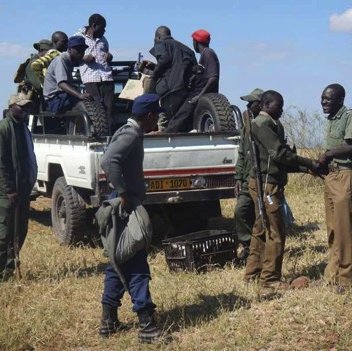
Black rhino in the Matusadona NP
Musango Safari Camp is a small, family-owned property on the shores of Lake Kariba, near Matusadona National Park. Guests are often drawn here by the owner, Steve Edwards, who is passionate about wildlife conservation and offers an informative view on the challenges of preventing poaching in nearby areas.
Back in 1993, just 14 black rhinos were still roaming freely in the valleys of Matusadona National Park. At that time, the team at Musango contributed to the reintroduction of black rhino into an intensive protection zone (IPZ).
The reintroduction project was initiated by the Save African Rhino Foundation, which opened a rehabilitation centre at Tashinga. Here, rescued calves were relocated and gradually reintroduced into the wild. This rhino population was then monitored for around three years before being released in the national park. Sadly, after management of the intensive protection zone (IPZ) was handed back to the parks authority, a lack of funding and mismanagement during the troubles led to a rise in poaching and a significant drop in rhino numbers. Despite this the project continues, and Musango continues to help when they can.
More recently, the Matusadona Anti-Poaching Project (MAPP) was implemented to assist with law enforcement in the area. Musango Safari Camp has two permanent rangers on site who provide additional help with monitoring the park’s wildlife and reporting any suspicion of illegal activities in the area.
See more great sustainability projects in Zimbabwe
Communications
- Power supply notes
- Musango has a generator which is on from sunset until the last guest goes to bed. After this a 12-volt battery powers lights in the chalets.
It is possible to charge batteries in the rooms (UK-style square-pin plugs) or at the bar when the generator is switched on. - Communications
- There is WiFi in the main area and patchy cell reception around camp.
- TV & radio
- None
- Water supply
- Mains
- Water supply notes
- The water here is drawn directly from the lake before being filtered and treated, making it safe to drink.
All rooms have flush toilets and hot and cold running water.
Health & safety
- Malarial protection recommended
- Yes
- Medical care
- There is a first-aid box in the camp and Steve is also trauma trained. The nearest doctor and hospital are in Kariba, which is about one hour by fast boat or 20 minutes by air.
- Dangerous animals
- High Risk
- Security measures
- There are security guards and anti-poaching staff at the lodge 24 hours a day.
- Fire safety
- There are fire extinguishers in all of the chalets as well as in the main areas.
Useful info
- Disabled access
- On Request
- Laundry facilities
- Laundry is included.
- Money
- There are no safes in the chalets. Any valuables should be handed to the manager or owner to be locked away in the office safe.
- Accepted payment on location
- Credit cards are not accepted. Park fees and tips are to be settled in cash, preferably in US dollars.
Plan and book your trip with Expert Africa
All of our trips are tailor-made, so we'll always adapt them to suit you. Talk to an Expert and let us plan and arrange your perfect trip.

Talk to an Expert
Call or email us now! We’ll match you with the Specialist in our team who is best suited to help you. Then together we can start planning your trip.

Set up your itinerary
Based on our experience and your ideas, your specialist will create a detailed, costed itinerary. We’ll refine it together, until we have a trip that you’re perfectly happy with.

Prepare for your trip
The same Specialist will make the seamless arrangements for your trip, send you detailed travel documents, and be available to answer any questions before you depart.

Travel with peace of mind
After you set off, you’ll be cared for by our partners in Africa, most of whom have worked with Expert Africa for decades. And if you ever need us urgently, we’re available 24/7.

When you return
We love to learn about your trip, and so will always be grateful if you’ve the time to give feedback to your Specialist when you return.
Musango Safari Camp's location
Look closer at the environment and surroundings of Musango Safari Camp.
Other lodges in Matusadona National Park
Alternative places to stay in this same area.
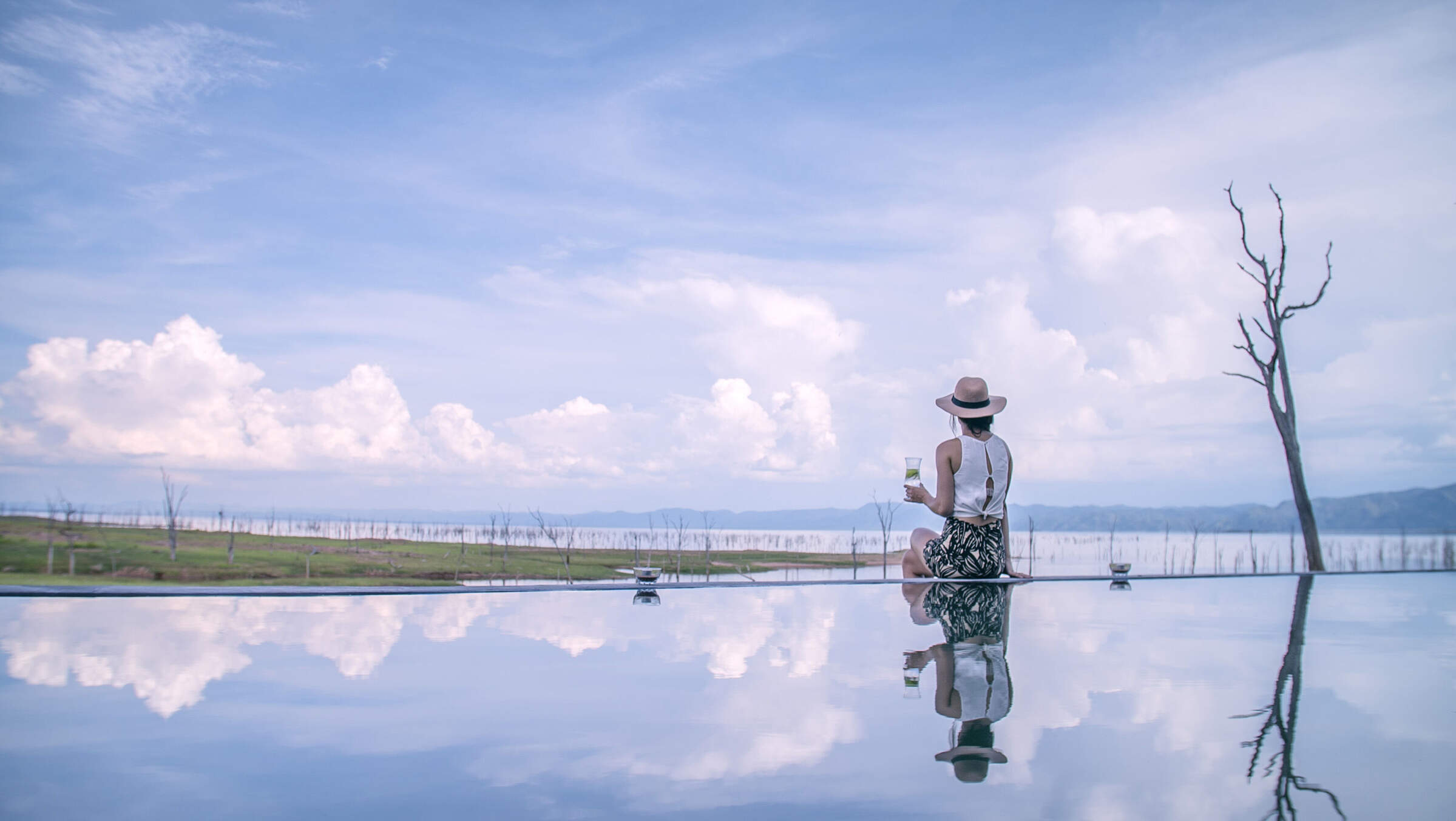
Changa Safari Camp
On Lake Kariba's southern shore the luxurious Changa Safari Lodge offers comfortable accommodation, great guiding & varied activities.
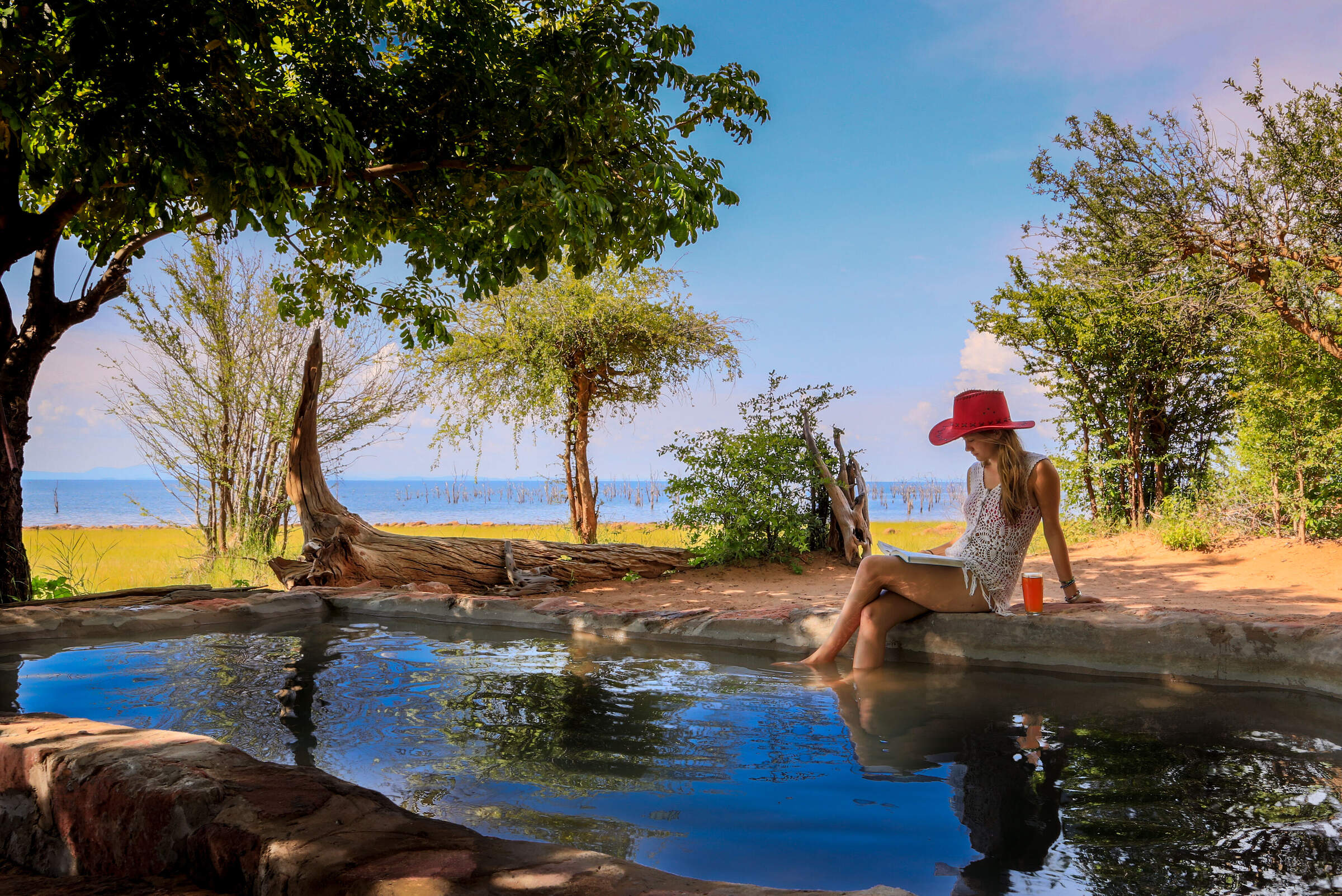
Rhino Safari Camp
Secluded on an island on the shores of Lake Kariba, the simple Rhino Safari Camp offers great guiding and a combination of water- and land-based activities.
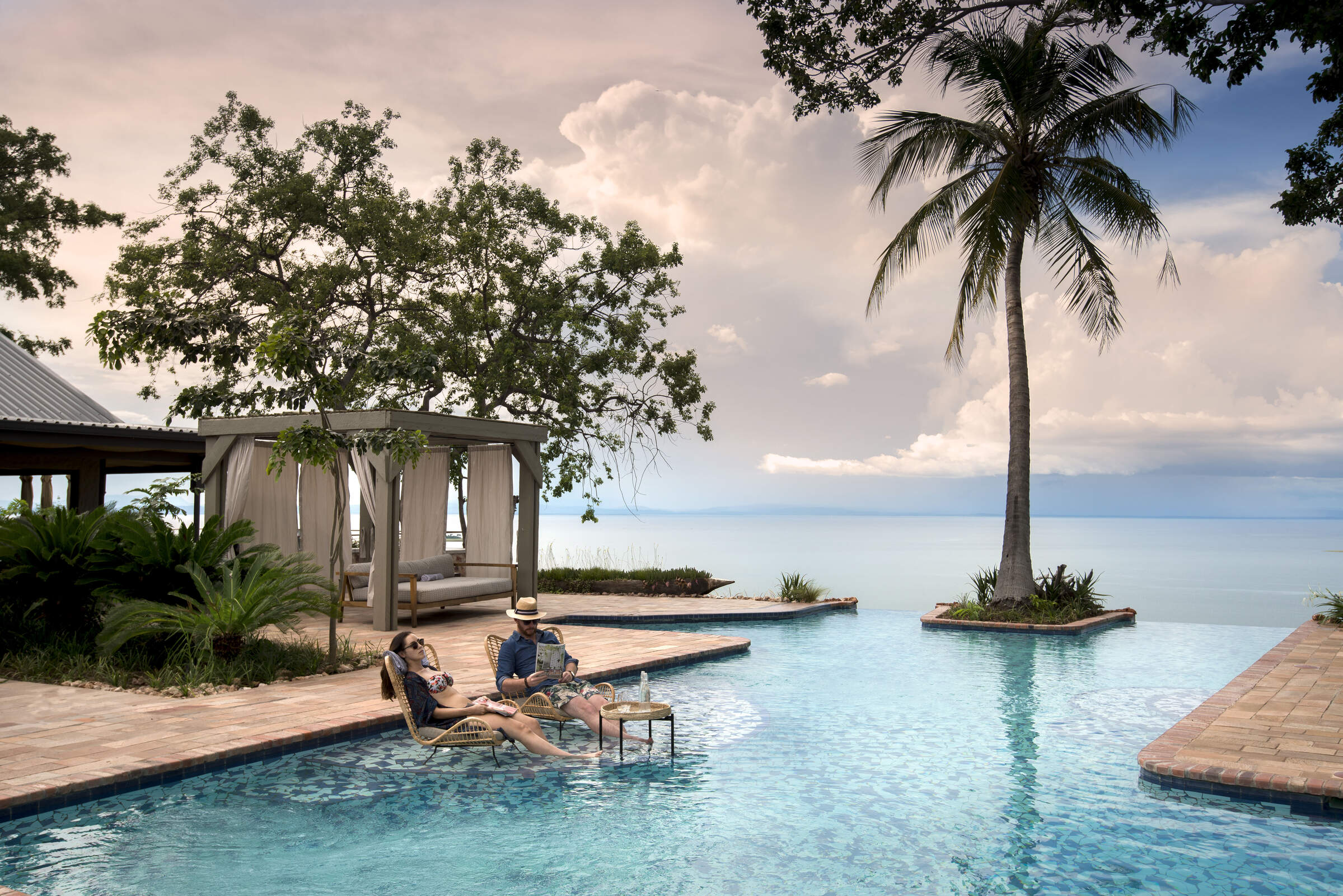
Bumi Hills Safari Lodge
With beautiful views over Lake Kariba, Bumi Hills Safari Lodge is a place to relax, although there are also plenty of activities on offer.
When to go to Matusadona National Park
Our month by month guide: What it's like to visit Musango Safari Camp in Matusadona National Park
Jan
Feb
Mar
Apr
May
Jun
Jul
Aug
Sep
Oct
Nov
Dec
Zimbabwe in January
January falls in the middle of Zimbabwe’s rainy season and is the wettest month of the year. Heavy rainfall occurs most days, flooding seasonal rivers and waterholes, with the occasional sunny spell.
With the high levels of precipitation the wildlife in the national parks becomes widely dispersed, taking advantage of the abundance of food and water, and is easily hidden by the thick, green bush.
While sightings of larger animals are possible, and many species drop their young at this time, game viewing is often sparse. However, many migratory species of bird arrive in Zimbabwe making it a peak month for birding.
The rains create incredibly sticky mud in Mana Pools National Park, preventing access and causing camps to close for the season. The majority of the camps in other parks remain open, with low rates attracting a smattering of visitors.
- Peak of the rainy season: hot & humid with heavy rain most days
- Bush exceptionally thick and green, with poor game viewing
- Species such as impala drop their young
- All camps in Mana Pools closed
- Very few visitors, and low rates at open camps
Our view
A time to avoid if possible
Weather in January
Zimbabwe in February
February remains well within Zimbabwe’s rainy season. Although total rainfall drops, relatively short thunderstorms can still be expected most afternoons. On the plus side, there is a greater chance of some sunshine in-between.
Much of the country remains waterlogged, closing access to Mana Pools and severely restricting walking safaris in other parks. While game drives and canoeing remain an option, the abundance of water disperses animals, and thick grass can make it difficult to spot larger species, but birding remains excellent. Conversely, this is a great time of year to view the landscape, and is excellent for photographers. Sporadic cloud cover and clear air can make for some spectacular sunsets too, particularly over Lake Kariba and the Zambezi River where the reflections off the water add to the beauty.
- Generally wet with frequent thunderstorms & hot humid days
- Poor wildlife viewing due to dispersed animals & thick bush
- Clear air, green landscapes & exceptional sunsets
- All camps in Mana Pools closed
- Very few visitors & low rates at camps that are open
Our view
This is not a great time to visit
Weather in February
Zimbabwe in March
March is the final month of Zimbabwe’s rainy season, when the rains start to trail off and sunny days become the norm. However, some days the clouds can still build, breaking into thunderstorms in the afternoon.
Mana Pools remains closed throughout the month but the majority of camps in Hwange, Matusadona and Gonarezhou remain open. Here, the landscape is green and alive, with migrant species of birds taking advantage of the abundant insect life. Larger animals remain elusive though, and walking safaris remain restricted.
By this time of year, the rains have normally trickled down to the Zambezi River and the flow of water over the Victoria Falls starts to increase, but without kicking up too much spray to obscure the views.
- Last month of the rainy season: hot, humid days with occasional storms
- Lush vegetation means good birding, but poor game viewing
- Views of the Victoria Falls improve
- All camps in Mana Pools closed
- Open camps have few visitors & low rates
Our view
This is not a great time to visit
Weather in March
Zimbabwe in April
April marks the end of Zimbabwe’s rainy season and the end of summer. Clear skies are the norm, with just the occasional shower. Temperatures start to drop, failing to reach 30ºC most days and dropping down to around 10ºC at night.
As the rain fades the landscape starts to dry out. While the vegetation remains thick and green, the soil in Mana Pools dries enough for camps to open, and the only camps to remain closed are the most remote bushcamps in Hwange. Although viewing of larger animals remains tricky, the improved weather starts to draw back visitors, as do prices significantly below those in the peak season.
The Zambezi River and flow of water over the Victoria Falls is at its highest, although large amounts of spray diminish views of the waterfall itself.
- Transitional period, with much lower rainfall & falling temperatures
- Wildlife is still dispersed & hard to see, but sightings improving
- Views of the Victoria Falls often obscured by spray
- Camps in Mana Pools open
- Visitors start to return & camps increase their rates
Our view
A good time to visit, with pros & cons
Weather in April
Zimbabwe in May
The first month in the dry season, May is also Zimbabwe’s first month of winter. If the rains are particularly late in a given year, you may catch the odd shower, but you can expect clear and sunny days the majority of the time. While it’s warm in the daytime, temperatures drop to single digits at night, so bring a warm jumper and gloves for early morning drives.
With the rain having cleared the air, the sky is bright blue, and it’s the best time of year for photography.
Even the most remote camps in Zimbabwe are now open. With the lack of rainfall, vegetation dies back significantly, and seasonal rivers return to sand. Not only does this open up the possibility of walking safaris, but wildlife viewing becomes much more reliable.
- Start of the dry season, with milder days and cold nights
- Game viewing significantly improves as vegetation dies back
- Vegetation starts to turn from green to brown
- Best time for photography with crystal clear air
- Visitors start to return; all camps open & rates increasing
Our view
A very good time to visit
Weather in May
Zimbabwe in June
During June you can virtually be guaranteed of dry and sunny days, although temperatures continue to drop, and can get close to freezing at night in Hwange National Park. Jumpers, jackets and gloves are strongly recommended for early mornings and evenings.
The opportunities for wildlife viewing improve throughout the month as the landscape rapidly dries, and the animals start to gather on the banks of the Zambezi River and around Hwange’s waterholes.
Water levels in the Zambezi River start to drop, reducing the amount of spray kicked up at the Victoria Falls and greatly improving visibility, but still allowing a full curtain of water to cascade over the edge.
- Middle of winter, with night-time temperatures close to freezing
- Game viewing significantly improves throughout the month
- Views of the Victoria Falls are at their best
- Noticeable increase in visitor numbers
- Camps considerably more expensive
Our view
A very good time to visit
Weather in June
Zimbabwe in July
July sits in the middle of Zimbabwe’s dry season. Although it’s warm at midday, temperatures are generally cold and in Hwange it’s been known to drop below freezing at night, with the lower-altitude Mana Pools feeling a bit warmer.
With wildlife clustering around the few remaining waterholes, sparse vegetation, and some of the best views of the Victoria Falls, this is one of the most popular times to travel, with camps charging peak season rates to reflect this. That said, visitor numbers to the country in general remain low, and outside of the Victoria Falls it’s rare for any areas to feel crowded.
- Middle of the dry season with almost no chance of rain
- Clear sunny days, but very cold nights
- Wildlife viewing good; game drives and walking safaris unrestricted
- Views of the Victoria Falls at their best
- Camps charging peak season rates
Our view
A very good time to visit
Weather in July
Zimbabwe in August
While August is the end of winter and temperatures are starting to creep up, mornings and nights are still cold, and game drives in open vehicles can feel particularly chilly. Well into the dry season, the landscapes will have mostly transformed from green to brown and wildlife viewing in Zimbabwe’s national parks is approaching its best. Due to dust kicked up into the atmosphere and smoke from bush fires you may start to notice a haze on the horizon, but this doesn’t significantly impact photography.
August is one of the most expensive months, and the pleasant weather and decent game viewing attracts lots of visitors. While the national parks rarely feel crowded, Victoria Falls accommodation can sell out a year in advance.
- Warm, sunny days but cold mornings & nights; almost no chance of rain
- Wildlife viewing nearly at its best
- Landscape turns brown, & an atmospheric haze develops
- All camps charging peak season rates
Our view
Fantastic: the very best time to visit
Weather in August
Zimbabwe in September
Temperatures in September rarely drop below 15ºC, but are yet to reach the oppressive highs of summer. It will normally have been five months since the last drop of rain, so antelope and elephants cluster around whatever water remains, with predators never too far away.
The landscape is very brown, and the haze building on the horizon takes some of the colour out of the sky, so while animal subjects are plentiful, the background is not ideal for photography.
The combination of incredible wildlife viewing, hot and sunny weather, and cheaper flights outside of the school holidays make this the most popular time of year to travel, and availability at the camps can become limited up to a year in advance.
- The best month for weather, with a pleasantly warm temperature range
- One of the best months for game viewing
- Victoria Falls starting to dry but still impressive on Zimbabwean side
- All camps are charging peak season rates
- Most popular time to travel, & space can be limited
Our view
Fantastic: the very best time to visit
Weather in September
Zimbabwe in October
October is the last month of the dry season with little chance of rain but building humidity. While the higher elevation of Hwange National Park limits temperatures to the 30s Celsius, they can easily top 40ºC in Mana Pools.
With little vegetation or water, wildlife is drawn to the few remaining water sources and viewing is at its best; visitors who brave the heat can be rewarded with some exceptional sightings, although haze in the air diminishes photos. Maximum visibility and dense wildlife concentrations can also make for very rewarding walking safaris, although the heat can make them uncomfortable.
Water levels in the Zambezi at the Victoria Falls drop significantly, and large stretches of the waterfall are a dry cliff-face – although it never dries completely. Camp rates remain at their peak, but visitor numbers drop as people avoid the heat.
- Last month of the dry season; very hot with building humidity
- Wildlife viewing at its very best
- Dust & smoke in the air diminish photographic opportunities
- Victoria Falls starting to look very dry
- Camp rates remain at their peak
Our view
A very good time to visit
Weather in October
Zimbabwe in November
November is a transitionary period, with high temperatures and humidity. While they can’t be predicted with any precision, the first rains normally arrive halfway through the month, in the form of thunderstorms lasting a few hours each day.
Early November is a popular time to travel as the camps drop their rates, so if you’re lucky you can get peak-season game viewing at low-season rates. This is a gamble though as if the rains do arrive, animals are no longer limited to a few dangerous waterholes and will disperse into the bush. While all the camps in Mana Pools intend to remain open, the rains can make the airstrips unusable so you may find yourself moved to a different park, a risk that increases through the month.
- Typically the start of the rains in Zimbabwe
- Temperatures & humidity levels remain high
- Wildlife viewing rapidly diminishes as the rains arrive
- Camps remain open, but risk early closure in Mana Pools
- Much cheaper time to travel as camps drop their rates
Our view
A good time to visit, with pros & cons
Weather in November
Zimbabwe in December
By December the rainy season has begun in earnest; this is one of the wettest months in Zimbabwe, with heavy thunderstorms most afternoons and occasionally continuous rain for a couple of days. While temperatures start to cool down the high levels of humidity can make the heat feel more oppressive.
With the rains comes an explosion of green growth, and the dust and smoke are washed out of the air. The resulting scenery – with the occasional bright blue skies – can be fantastic for photographers. Thick vegetation and plentiful water makes viewing of larger animals tricky, but with migratory species arriving the birding is at its best.
All camps in Mana Pools and the remote Hwange camps close, with those remaining open charging their lowest rates.
- One of the wettest months in Zimbabwe
- High temperatures & levels of humidity
- Wildlife viewing poor, but birding good
- Lush green landscapes & clear air; great for landscape photography
- All camps in Mana Pools closed
Our view
This is not a great time to visit
Weather in December

Looking for inspiration on where to travel next?
Visit our trip chooser to explore your options and find inspiration for your perfect African adventure
Inspire me